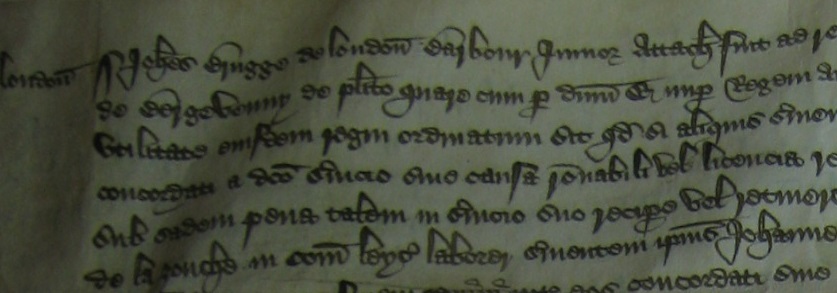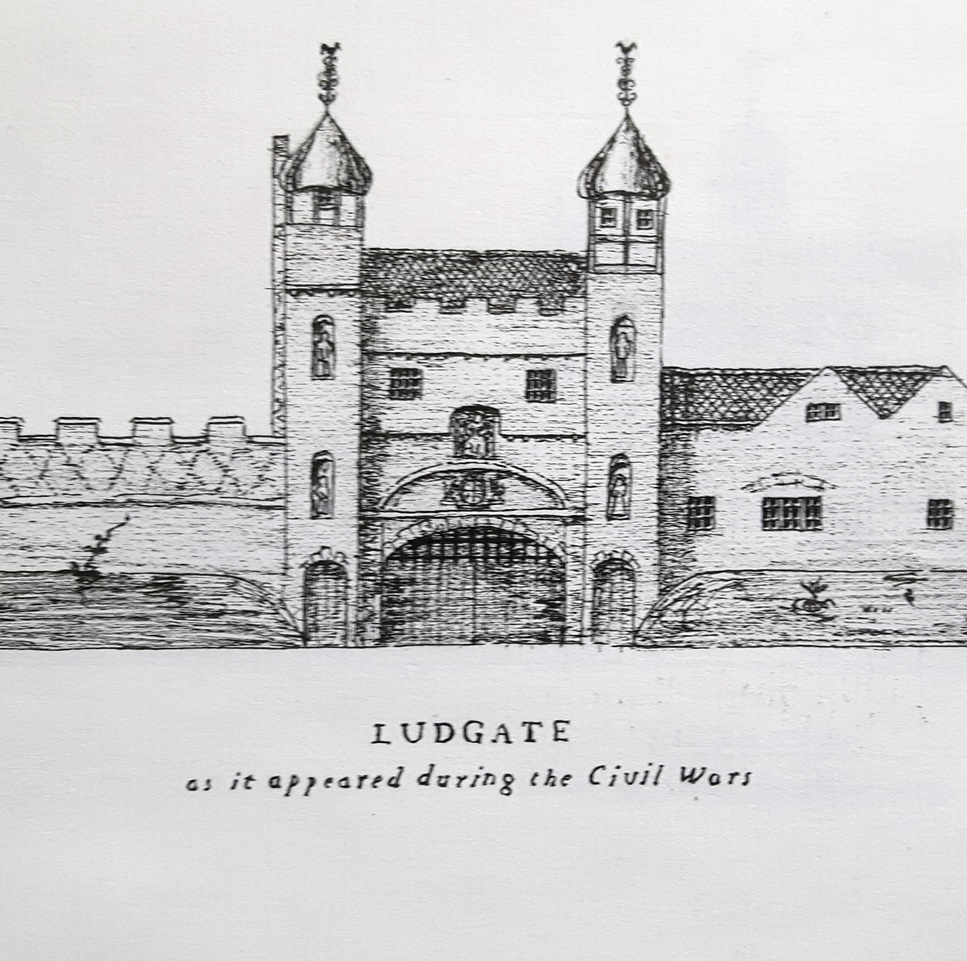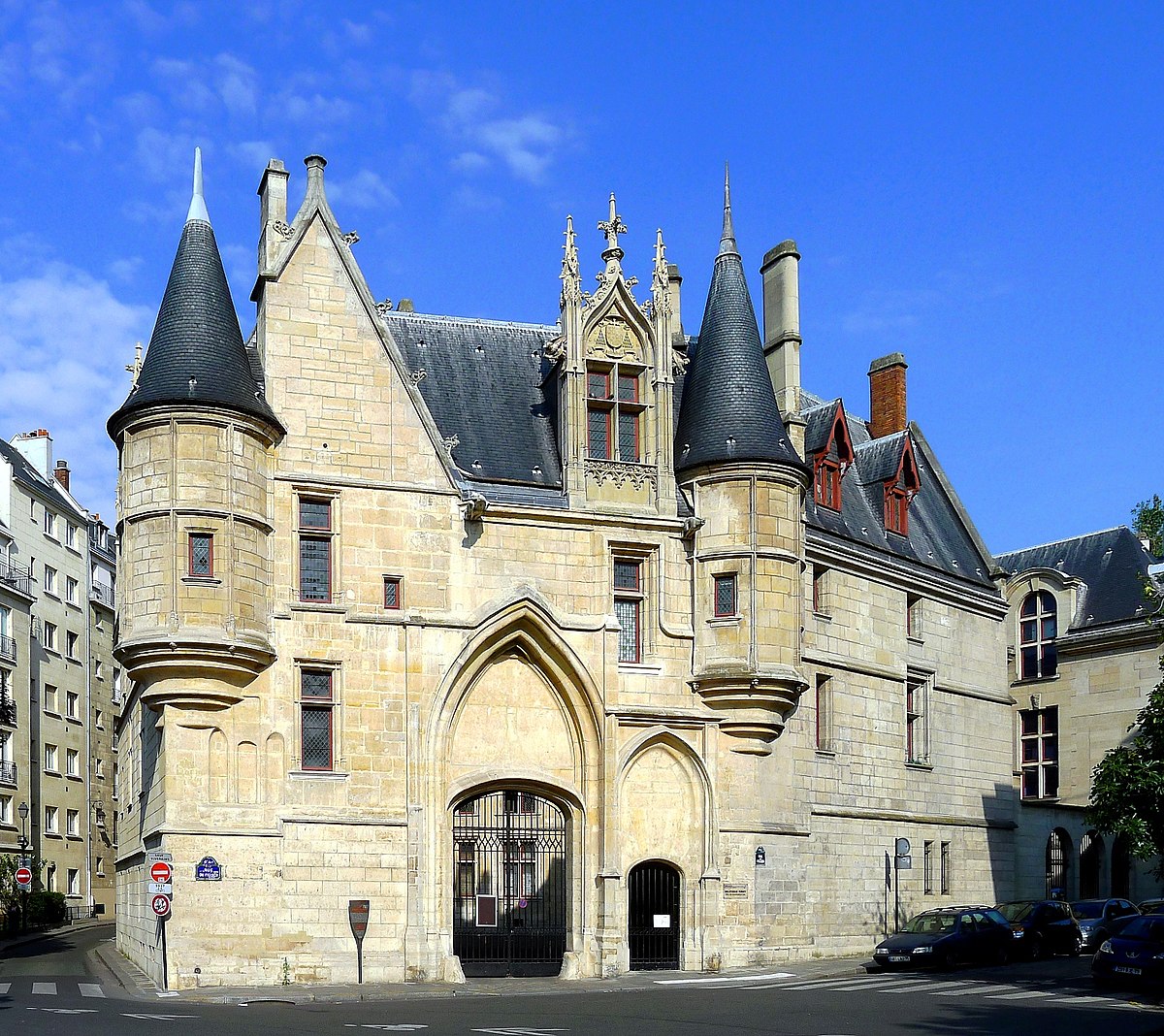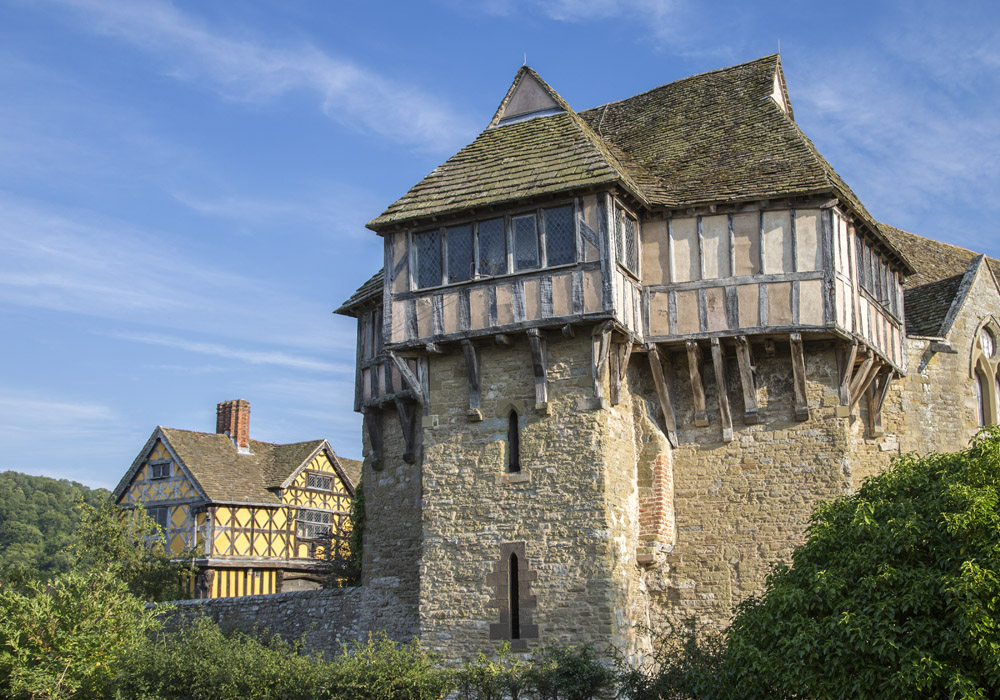(Thread) For those following the saga of Joan Beauchamp, Baroness Bergavenny (the "Second Jezebel", or "Joan the Beheader"... okay I made that last one up), I found her London house! See it in the centre, the structure called "Pembroke& #39;s Inn". There& #39;s an employment law aspect too
(2) Joan died in 1435 and as with all & #39;tenants-in-chief& #39; there was an Inquisition Post Mortem to see what lands she owned from the king, and what duties she might owe on them. The City of London IPM showed her as owning a property called & #39;Penbrokesyn& #39; in St Martin Ludgate.
(3) I didn& #39;t pay much attention. But I was then searching through Common Pleas records for London cases and found that in 1423, Joan was plaintiff in a case brought under the Statute of Labourers against a servant called William Warner. She brought him down from her manor in
(4) Leicestershire, Ashby-de-la-Zouche, and employed him under contract for a year to work in her kitchens at Pembroke& #39;s Inn. It must be remembered that even 70 years after the black death, the population still hadn& #39;t recovered and labour was valuable. It turns out 8 months into
(5) contract William left Joan& #39;s service, without licence, and took up service with a barber called John Brugge. Back then, barber& #39;s didn& #39;t just cut hair / beards, they lanced boils, did bloodletting, removed arrows, did various surgeries. Per the statute of Labourers, the master
(6) who colludes in taking a servant out of service of another is also liable and so Joan sued both William Warner and John Brugge. I noticed that the location of the place mentioned was St Martin& #39;s Ludgate, where & #39;Penbrokesyn& #39; had been mentioned. After a second (pic: Ludgate)
(7) concluded it was probably called "Pembroke& #39;s Inn" and voila, all doors were opened. She definitely did own Pembroke& #39;s Inn, originally Brittany Inn and later known as Bergavenny House. In the Tudor period it was bought by the Stationers Company and their hall still sits on
(8) that site today. Pembroke& #39;s Inn is described as a "great house of stone and timbre... in 1352 an inspection of encroachments near Ludgate by the City authorities showed the countess had built a small tower". Note these facts; this house seems to have been fortified to some
(9) degree. It was across the street from the palace of the Bishop of London and St Paul& #39;s Cathedral, and directly to its west were London wall and the Ludgate, which was a prison and would have had some security/garrison. So what did it look like? Perhaps like the Hotel de Sens
(10) in Paris, which is from a comparable time period and is of comparable size? Although Pembroke& #39;s Inn had a tower, I doubt it was as embellished or beautiful as the Hotel de Sens. Might it have looked like some sections of Stokesay Castle? (pictured) I& #39;m also not sure.
(11) I suspect that given it was an incomplete quadrangle it probably would have looked a bit like the medieval quandrangular Oxbridge colleges do, perhaps less grand, and it would have had a strong gatehouse and a tower. Beyond that, we can speculate. I& #39;m sp delighted, however,
(12) to find Joan& #39;s house through prompting of a 15th-century employment law case. Bringing my two loves together, 15th-century history and law, and employment law, together, is a treat beyond imagining. If you haven& #39;t kept up w/ the Joan saga, read on; https://orderofthecoif.wordpress.com/2020/08/15/punish-the-jezebel-or-the-king-versus-joan-in-parliament-1432/">https://orderofthecoif.wordpress.com/2020/08/1...

 Read on Twitter
Read on Twitter








